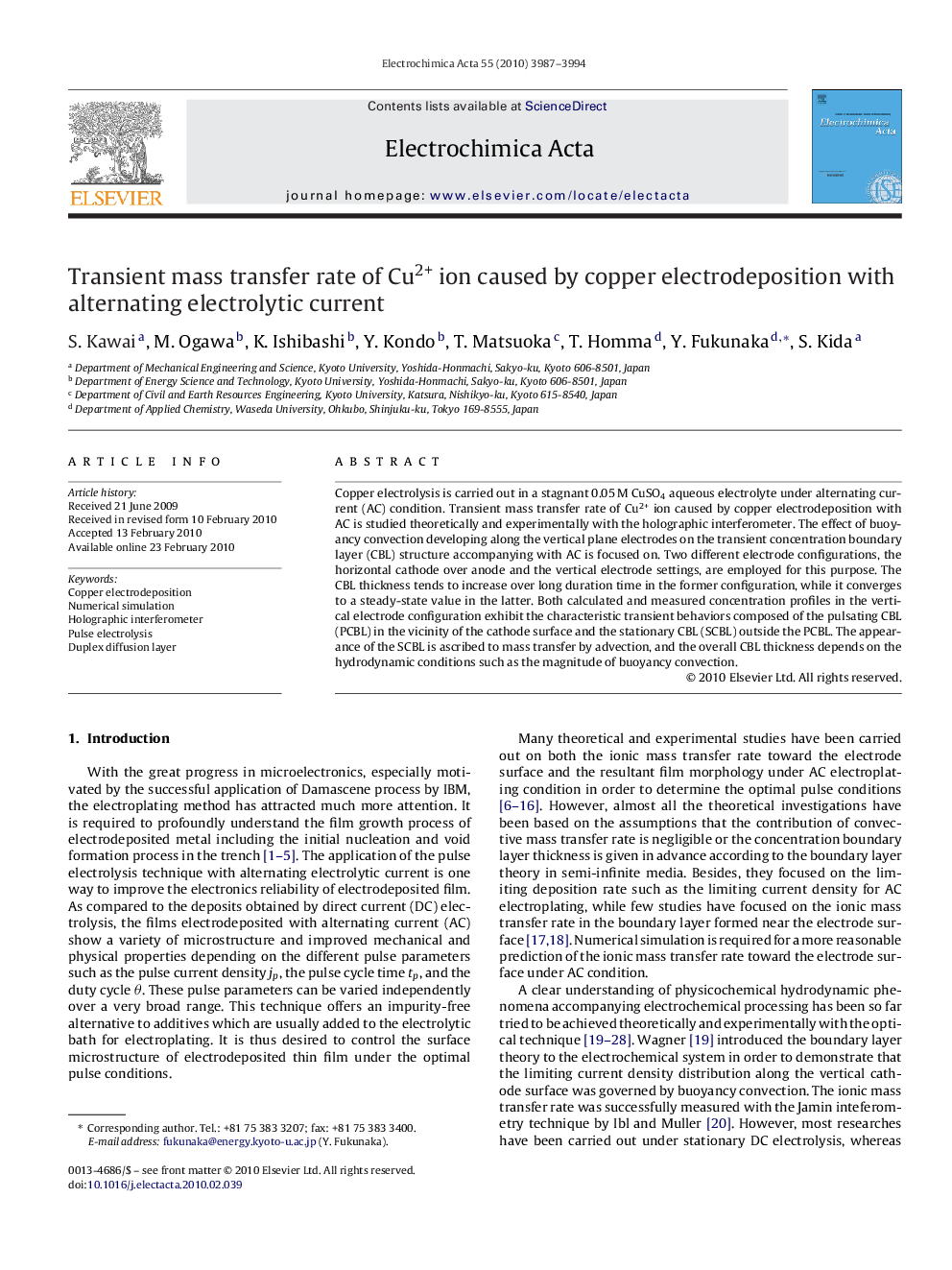| Article ID | Journal | Published Year | Pages | File Type |
|---|---|---|---|---|
| 191535 | Electrochimica Acta | 2010 | 8 Pages |
Copper electrolysis is carried out in a stagnant 0.05 M CuSO4 aqueous electrolyte under alternating current (AC) condition. Transient mass transfer rate of Cu2+ ion caused by copper electrodeposition with AC is studied theoretically and experimentally with the holographic interferometer. The effect of buoyancy convection developing along the vertical plane electrodes on the transient concentration boundary layer (CBL) structure accompanying with AC is focused on. Two different electrode configurations, the horizontal cathode over anode and the vertical electrode settings, are employed for this purpose. The CBL thickness tends to increase over long duration time in the former configuration, while it converges to a steady-state value in the latter. Both calculated and measured concentration profiles in the vertical electrode configuration exhibit the characteristic transient behaviors composed of the pulsating CBL (PCBL) in the vicinity of the cathode surface and the stationary CBL (SCBL) outside the PCBL. The appearance of the SCBL is ascribed to mass transfer by advection, and the overall CBL thickness depends on the hydrodynamic conditions such as the magnitude of buoyancy convection.
